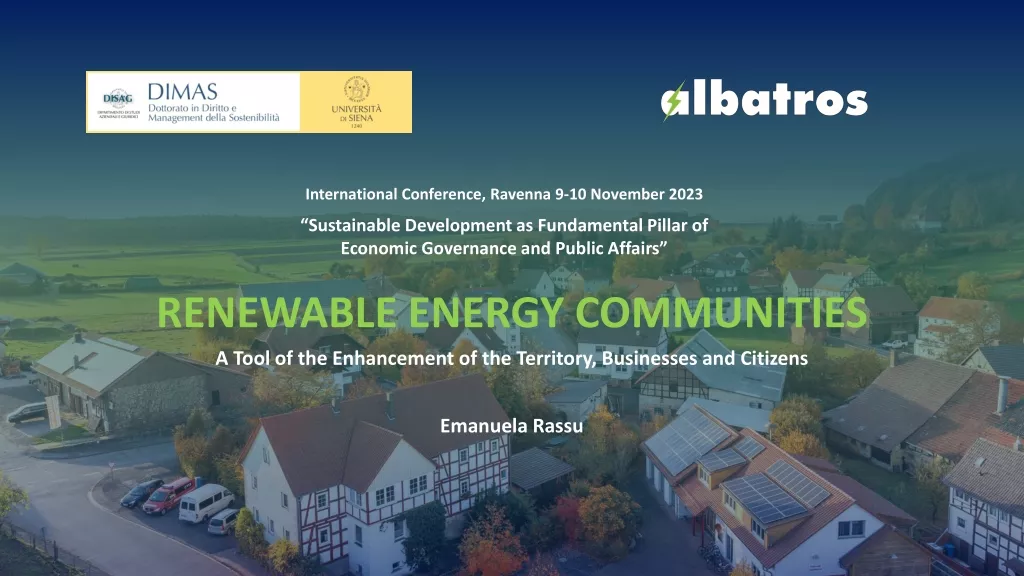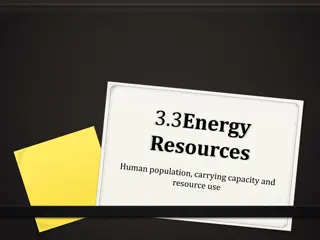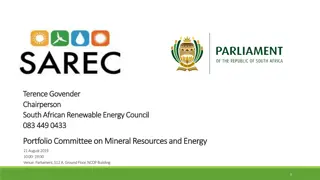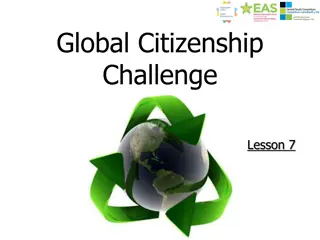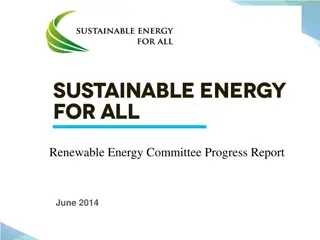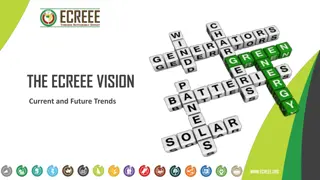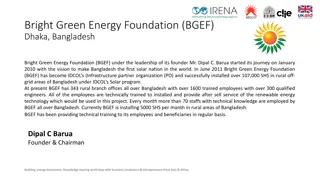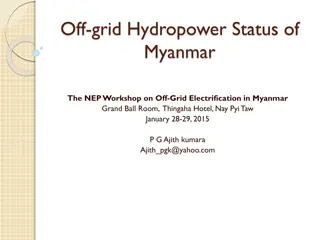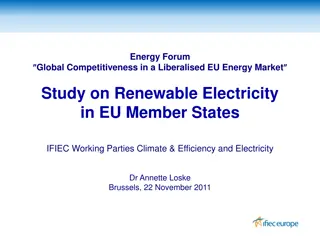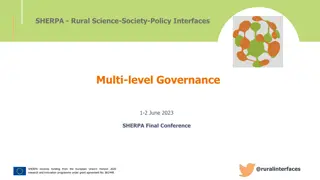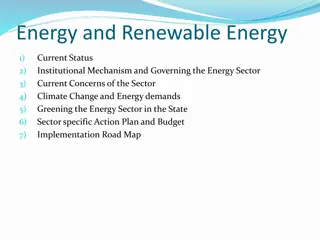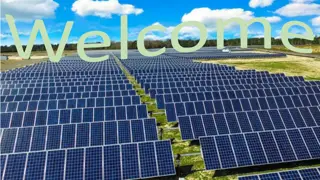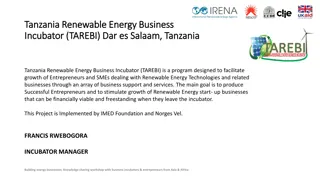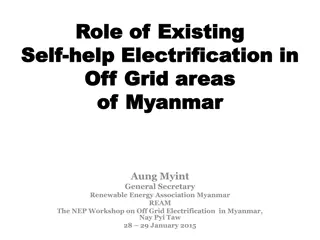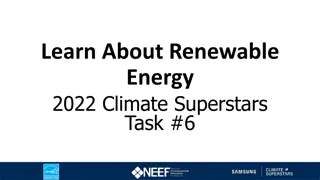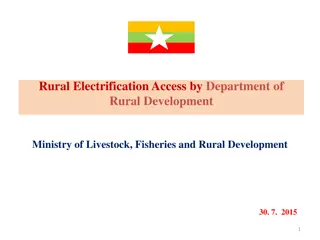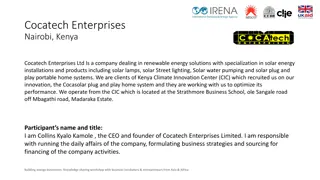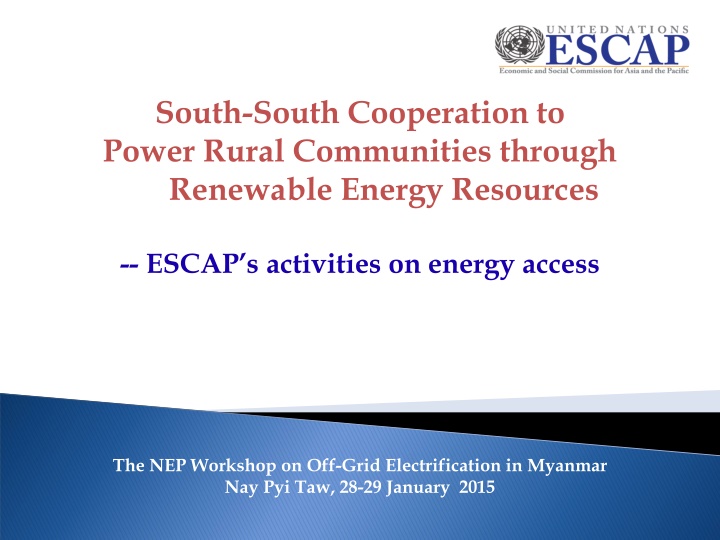
Enhancing Rural Communities with Renewable Energy in Myanmar
Collaboration between South-South Cooperation and ESCAP aims to empower rural communities in Myanmar with off-grid electrification, focusing on renewable energy resources. The NEP Workshop held in Nay Pyi Taw discussed strategies for improving energy access in rural areas.
Download Presentation

Please find below an Image/Link to download the presentation.
The content on the website is provided AS IS for your information and personal use only. It may not be sold, licensed, or shared on other websites without obtaining consent from the author. If you encounter any issues during the download, it is possible that the publisher has removed the file from their server.
You are allowed to download the files provided on this website for personal or commercial use, subject to the condition that they are used lawfully. All files are the property of their respective owners.
The content on the website is provided AS IS for your information and personal use only. It may not be sold, licensed, or shared on other websites without obtaining consent from the author.
E N D
Presentation Transcript
South-South Cooperation to Power Rural Communities through Renewable Energy Resources -- ESCAP s activities on energy access The NEP Workshop on Off-Grid Electrification in Myanmar Nay Pyi Taw, 28-29 January 2015
ESCAP 53 members states 9 associated members 7 substantive divisions 4 subregional offices Promotes intergovernmental dialogues for regional cooperation Conducts multi-sectoral research and analysis Facilitates capacity development and technical assistance to promote regional co-operation and to strengthen regional capacity on energy towards inclusive sustainable socio-economic development
1.3 billion people lacked access to energy in rural areas in 2011 628 million people without access to electricity 2.6 billion people still employed traditional cookstoves and open fires for heating and cooking in 2011
1.0 Rural and Urban Electrification Rates, 2010 Access to Electricity and Human Development, 2010 0.9 Korea, DPR Cambodia 0.8 Timor-Leste Human Development Index 2010 Human Development Index 2010 Afghanistan Myanmar Bangladesh 0.7 Lao PDR Pakistan Indonesia India 0.6 Mongolia Nepal Philippines Sri Lanka 0.5 Thailand Iran, IR Vietnam 0.4 Malaysia Brunei Darussalam China y = 0.24 + 0.04x R2 = 0.71 Singapore 0.3 - 50 100 20 30 40 50 60 70 80 90 100 Access to Electricity (% of Population) Access to Electricity (% of Population) Rural electrification rate % Urban electrification rate %
2014-2024: Decade of Sustainable Energy for All SE4ALL: Global action to achieve universal access to modern energy services by 2030 Universal Access to modern energy services: US$ 1 Trillion required Universal electricity access: 60% via mini- grids and off-grids
part of larger ESCAP project on Strengthening national capacities of Myanmar and other (ASEAN) least developed countries to effectively integrate into the ASEAN Economic Community and the Asia-Pacific economy and community at large Objectives Develop methodology for integrated rural energy planning at community and local level Capacity development on rural energy planning, specifically on utilizing locally available renewable energy in rural energy access programmes Financial and technical support from China
Participating member States: Cambodia, China, Myanmar, Mongolia Common challenges: Low access to energy in rural areas 5 to 19% access to modern cooking fuels (except China) 19 to 98%* access to electricity (* for China) High dependence on traditional biomass Ample, under-utilized renewable energy potential
Target groups a) Poor rural agricultural communities who need energy services for households and productivity b) Private sector, NGOs and women s organizations that are working in the area of renewable energy for development c) Policy- and decision-makers at local and national levels who are responsible for energy and rural development policies
Rich in energy resources Natural gas: reserves of 7.8 trillion f (0.2 trillion m ) Oil: 51,000 barrels/day of petroleum products in 2011 Coal: about 490 million tons of reserves, production rising Renewables: High potential in solar, hydro, biomass, wind and geothermal Only hydro commercially exploited with an additional 300 projects identified, total potential capacity 46,331 MW Energy dominates foreign investments In 2010, 42% in oil and gas, 35% in power
Low access to modern energy services 13% to 26% electrification 7% of rural population connected to national grid Even in Yangon, the largest city, 67% connected 95% rely on solid fuels for cooking and heating Largest gap to fill in the Asia-Pacific region To achieve universal access to electricity by 2030, World Bank estimates yearly investment requirements of US$ 444 million, i.e. 10% of GDP
Complex institutional setting Missing in the chart! Ministry of Livestock, Fisheries and Rural Development (MLFRD) Ministry of Cooperatives
Assessment of rural energy resources and needs to support prioritization Focus on households, SMEs, community and public services energy for productive use Targeted support to develop tools for rural energy planning and technology transfer In line with evolving policy and investment context Opportunities for country-driven regional cooperation Network with other Asian countries who are (a) facing similar challenges or (b) overcoming these challenges
Planning*current stage Needs assessment (including gender analysis) and expert group meeting Capacity development Training sessions (2) and study tour Pilot demonstration project Emphasis on community development and using renewable energy for rural energy access Knowledge dissemination Events and communication materials, building on monitoring and evaluation framework
Hongpeng Liu Chief, Energy Security and Water Resources Section United Nations Economic and Social Commission for Asia and the Pacific


